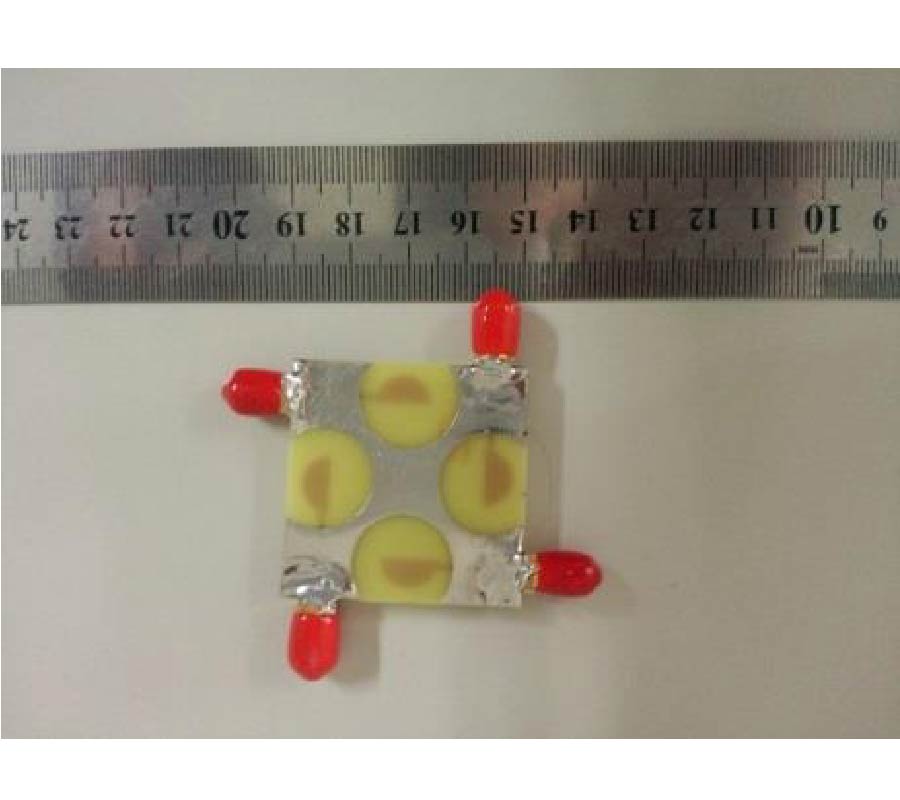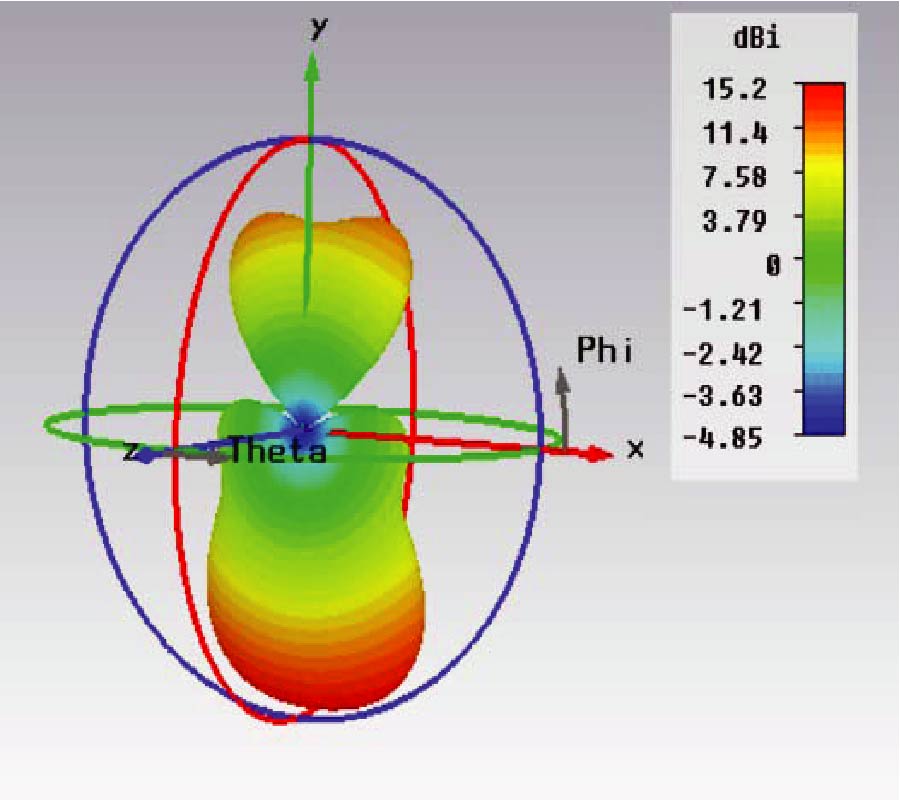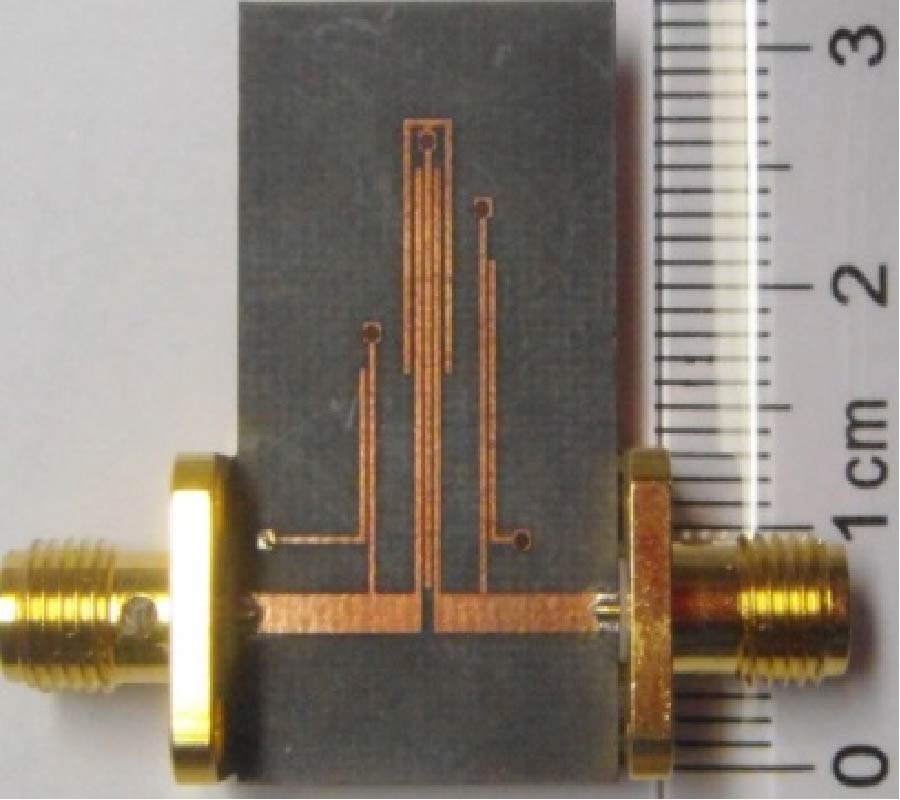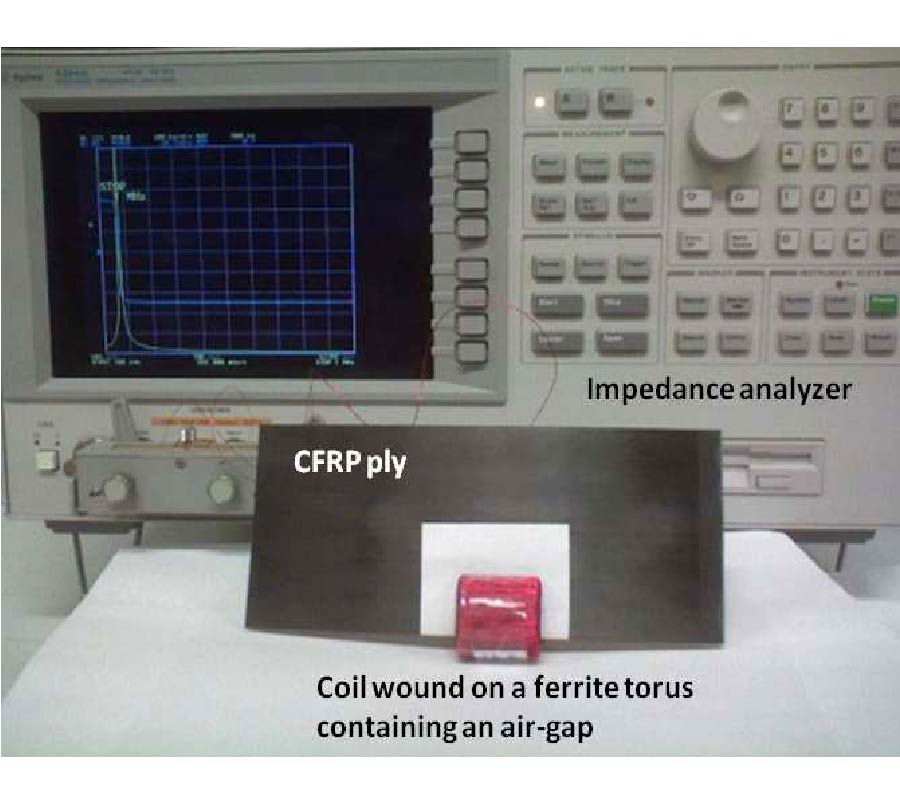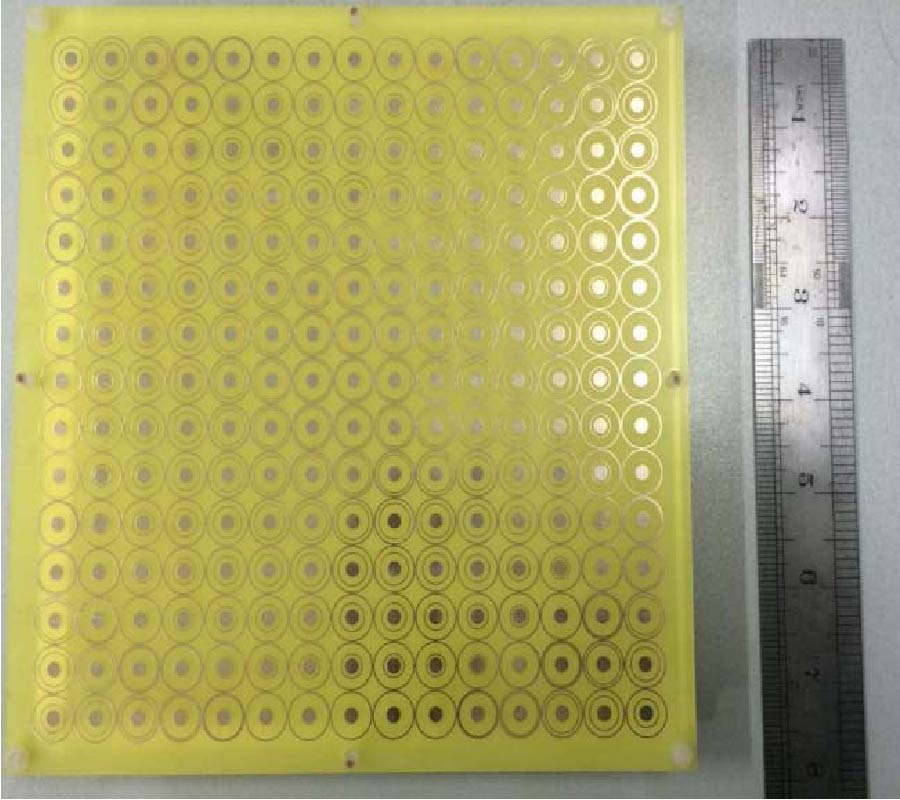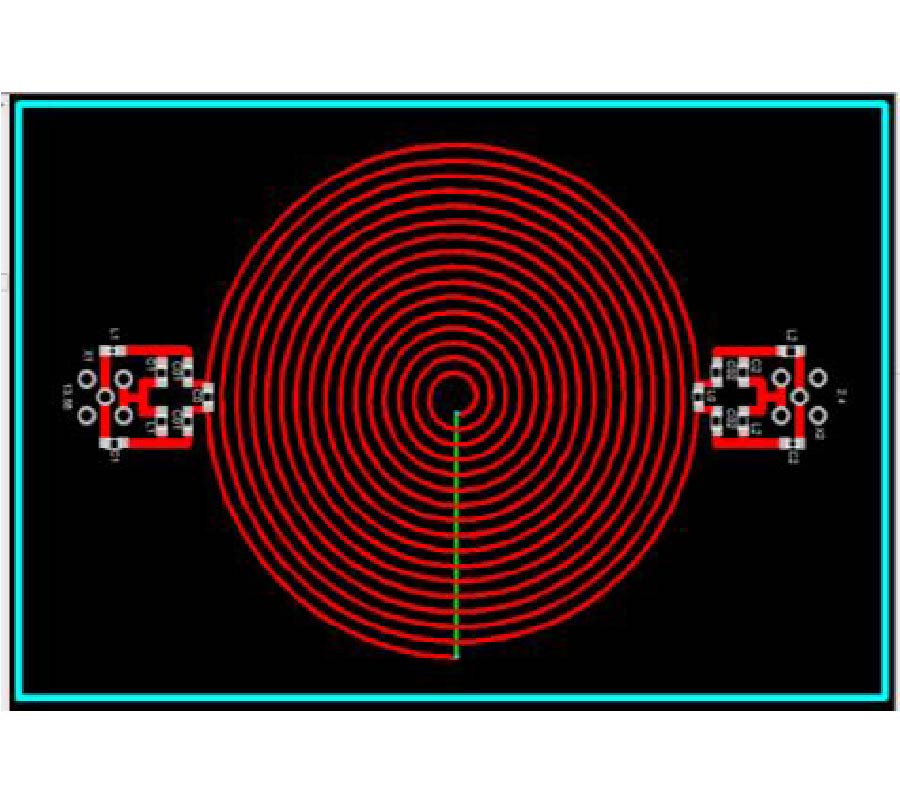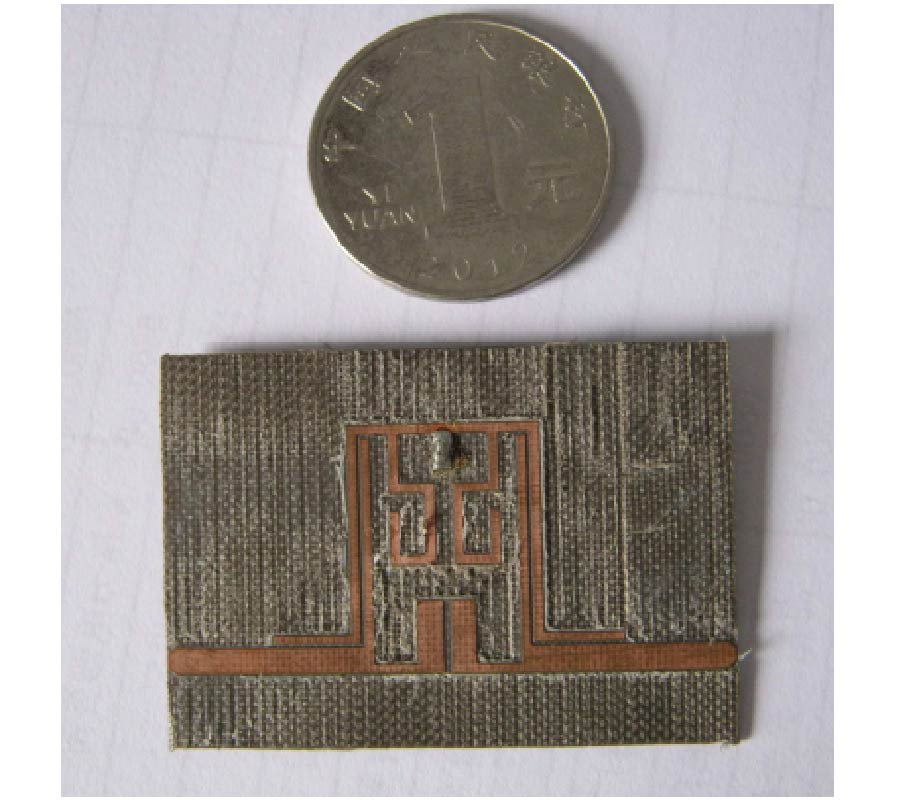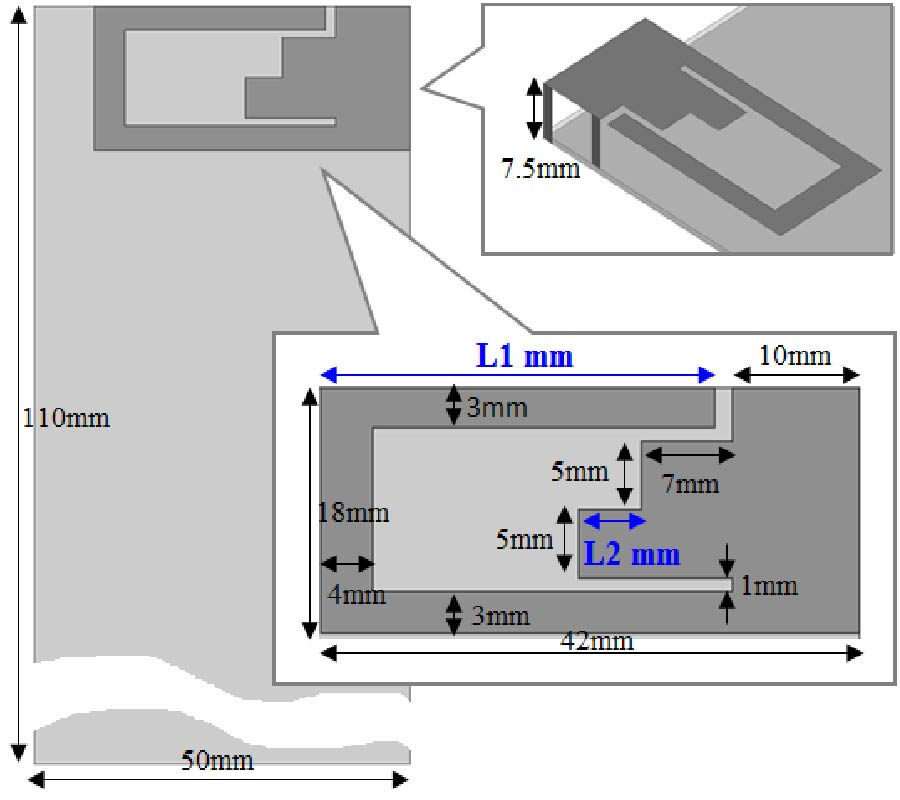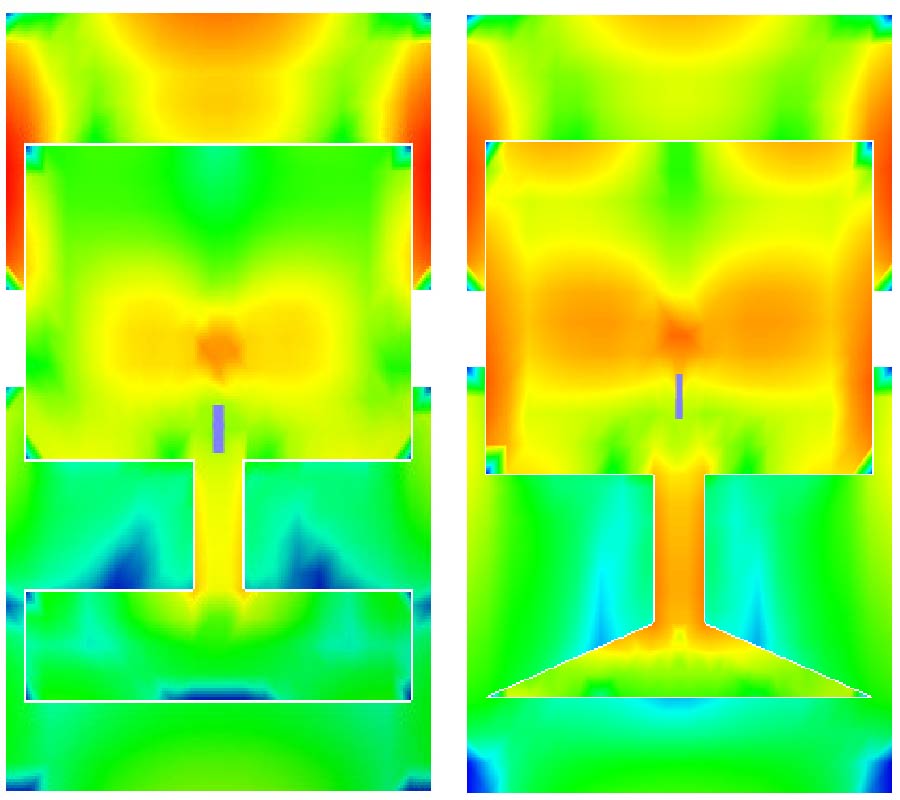A Compact Four-Element UWB MIMO Antenna with Qsca Implementation
Jian-Feng Yu
,
Xianglong Liu
,
Xiao-Wei Shi
and
Zedong Wang
In this paper, a new approach using quasi-self-complementary antenna (QSCA) to reduce the wideband mutual coupling is proposed and discussed. QSCA element proposed in this paper is composed of a semi-circular radiation patch and a complementary-cut ground plane, which is easy to achieve ultra-wideband operation because its impedance is frequency independent. The proposed compact four-element ultra-wideband (UWB) multiple-input multiple-output (MIMO) array consists of four QSCA elements, and by arranging them anticlockwise, a good impedance matching and high port-to-port isolation (|S11| covers 2.95-12.1 GHz with |S21| = |S31|≤-15 dB, |S41|≤-17.8 dB) can be achieved. Notably, the isolation is obtained without using any other decoupling methods and totally benefits from the asymmetrical radiation property of QSCA. As an example, the proposed four-element UWB MIMO array is fabricated and tested. And the measured radiation pattern, gains and total efficiencies are displayed and show good performances which make it a nice candidate for future UWB diversity applications.


